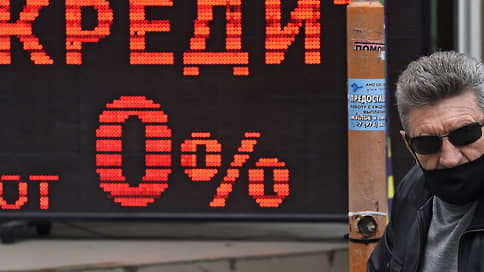Consumer loans set to increase – Kommersant FM
[ad_1]

Consumer loans have risen in price almost to the crisis level of last year. The average total cost of such loans in November was slightly less than 29.5%, writes RBC, citing calculations by the credit history bureau Scoring Bureau. This is the real rate, which includes the principal, interest on the loan and some types of additional costs. Similar indicators were recorded in the spring of 2022. However, then the Central Bank raised the key rate immediately to 20% per annum. Now it is at 16%.
Why, in this case, has the cost of consumer loans increased at a comparable rate? And what can we expect from this market next year? Independent expert on financial markets Alexey Bushuev believes that banks acted proactively, awaiting further steps from the Central Bank:
“The regulator has directly said that it is fighting the threats of inflation. Increasing the cost of unsecured loans is one way to reduce effective demand for goods, if we are talking about credit cards and everything connected with them.
Accordingly, banks see such very clear signals and want to hedge their bets in our turbulent times, expecting, in particular, a rate increase. So, on the one hand, they are tightening the screws on issuing loans, and, on the other, they are trying to compensate for the possible growth of the key indicator using both interest and non-interest instruments.”
Meanwhile, the consumer lending market in Russia, against the backdrop of rising rates, began to decline monthly since the beginning of autumn. According to estimates by Frank RG, in November the volume of unsecured loans provided decreased by 15.5% compared to October, to RUB 460 billion.
Next year’s indicators will depend on further decisions of the Central Bank on the key rate, noted Ivan Uklein, director of bank ratings at the Expert RA agency: “The point is not only and not so much in the magnitude of the increase in the key rate, but in the period for which this occurs.
In the spring of 2022, for example, the rhetoric of the Bank of Russia was quite clear – it was sharply raising the rate, but for a very short time, with the aim of macroeconomic stabilization. At the same time, we are now seeing rates rise below last year’s levels.
At the same time, the regulator’s rhetoric indicates that this increase is much more long-term, since it has a different nature. It is with us for at least a few more months, and banks are passing on these interest rate and credit risks into the rate charged to borrowers.
Meanwhile, practice shows low elasticity of demand for loans depending on the rate. At least it is not as high as predicted. That is, they take out loans just as willingly and at 30% per annum as a little earlier at 25%.
The reduction in the volume of unsecured lending is explained primarily by tightening measures taken in terms of macroprudential limits. Banks were forced to increase the percentage of refusals, reducing limits for clients with a formally high debt burden. Of course, this affects the overall market indicators, the overall dynamics.”
Meanwhile, the head of the Central Bank, Elvira Nabiullina, said in mid-September that the current cycle of tightening monetary policy differs from the situations of 2014 and 2022. Therefore, one should not expect a quick reduction in the key rate, concluded the chairman of the regulator.
Everything is clear with us – Telegram channel “Kommersant FM”.
[ad_2]
Source link






